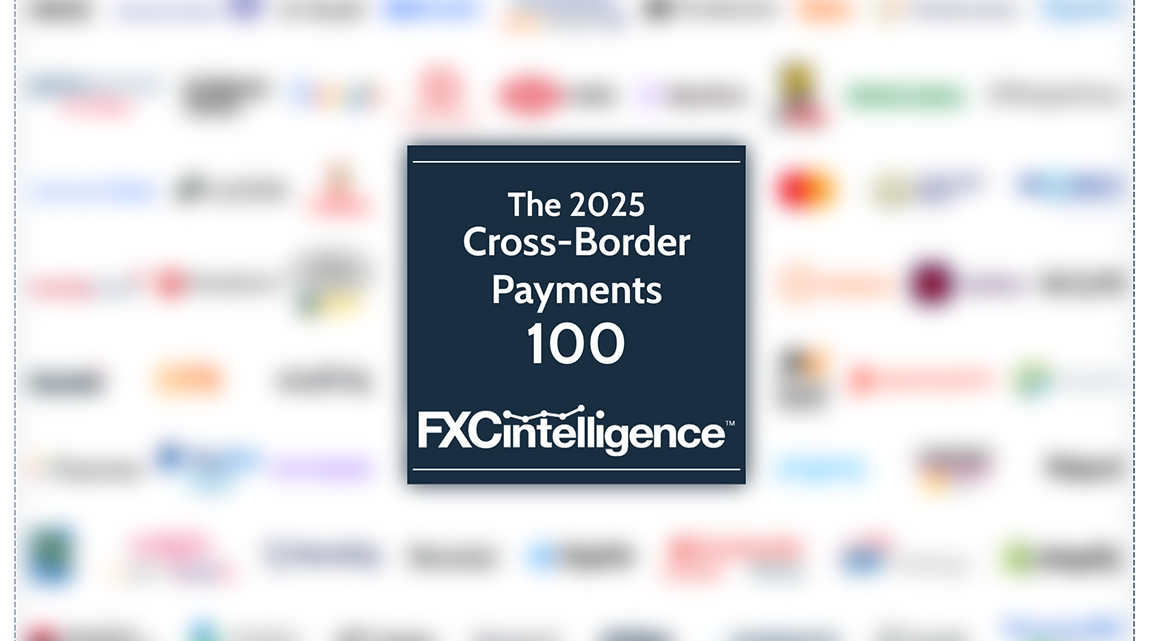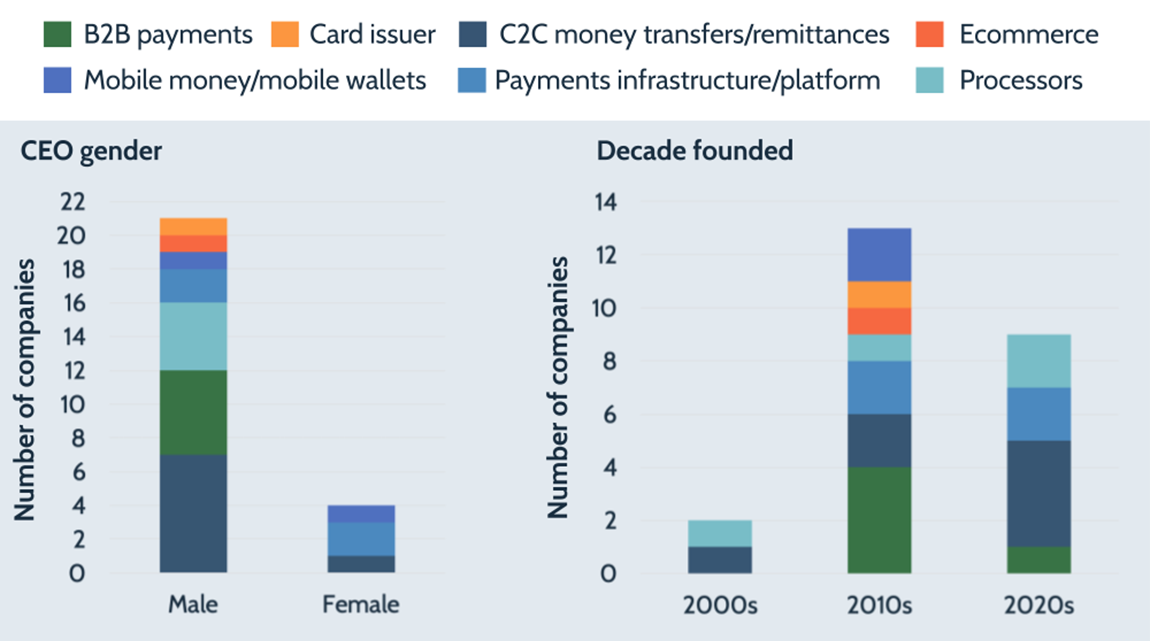After revealing FXC Intelligence’s 2023 Cross-Border Payments 100, we break down key data about the companies included to give insights into how the industry is shaping up.
Last week, we revealed our 2023 Cross-Border Payments 100, which recognises the most important companies in the cross-border space (in case you missed it, here’s a link to the full 2023 Cross-Border Payments 100 report).
Our Top 100 map is designed to present a snapshot of the cross-border payments industry, spanning from money transfer businesses to online retail players, payment processors, B2B payments, crypto providers and more. To give you an even better understanding of the space, we’re looking back at some of the data behind our Top 100 picks – how long they’ve been around, who’s leading them, who’s backing them and how big they are – to highlight key trends in cross-border payments for 2023.
Companies only make our list if they meet one key criterion, which is that there would be a meaningful impact if they were removed from the sector. That means that the findings here are hugely relevant, both to those companies that are currently in the space or just wishing to learn more about the market.
First of all, here’s another look at our market map for 2023:
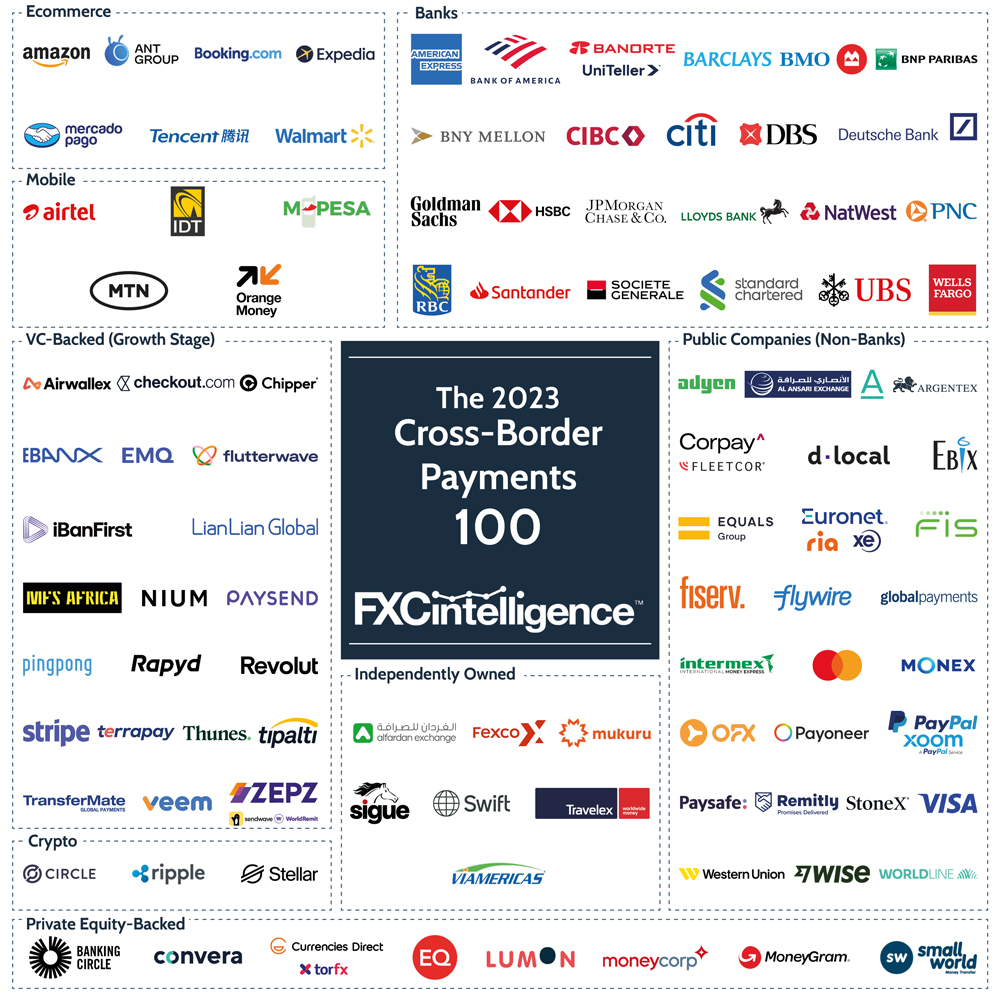
This year, we’ve added a brand new Ecommerce section to the Top 100 map in recognition of the vital role and ongoing innovation that online retail has had (and continues to have) on the sector. Aside from that, here are some of the other trends we’ve noticed across the Top 100.
Most companies were founded in 2010 or later
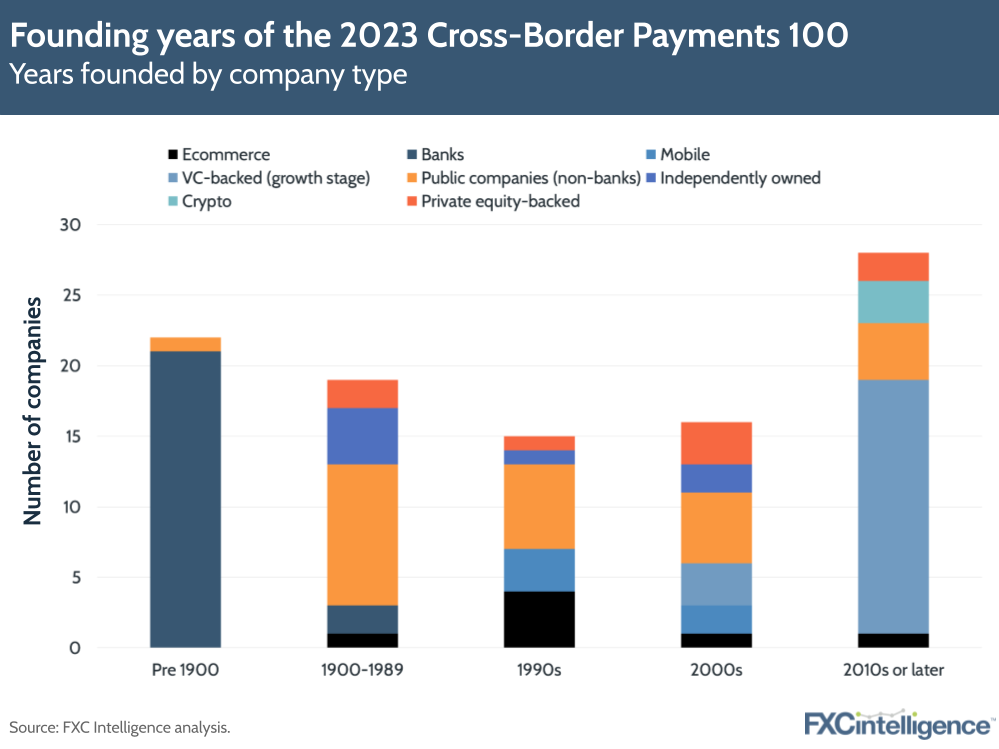
This graph shows the decades in which companies across our 2023 Cross-Border Payments were founded. The majority of companies were founded in the 2010s or later, with many of these receiving a great deal of backing from venture capital (VC investors) or being major players in mobile or crypto payments. Having said this, we found in a report about payments investing earlier this year that global venture funding dropped by 35% in 2022, down to $445bn against 2021’s $681bn, as a result of a tougher macroeconomic environment.
Startups born in the last two decades are using technology to present innovative solutions to the biggest issues in cross-border payments, whether that’s helping immigrant populations send money home for less (Wise, MoneyGram, Remitly), creating mobile wallets that boost digital inclusion (MFS Africa) or building entirely new payment ecosystems using decentralised digital currencies (Stellar, Circle).
Banks still play a major role in the cross-border payments sector and while many of them have changed names, gone through mergers or changed form, for the most part we used their original founding date, which explains the high numbers pre-1900. UK-based Barclays, for example, saw its origins in 1690, while the latest founding on our list was Convera, formed as a spin-out of the former Western Union Business Solutions in 2021.
Diversity still an issue amongst payments CEOs
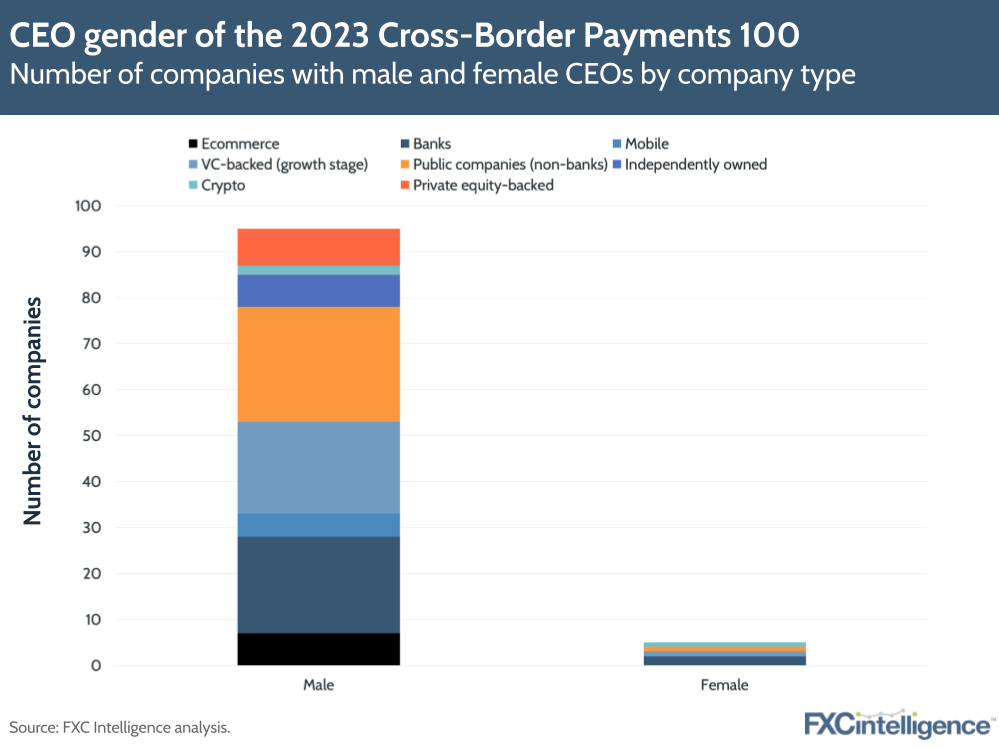
The graphic above says it all: 95 companies from our top 100 have a male CEO while just 5 have a female CEO. Though our research in the past has shown more women filling C-suite roles across a subset of payments, it’s clear that there is still some way to go when it comes to having more gender diversity at the very top of the cross-border payments space.
This gender imbalance in CEOs specifically has been a hot topic, as we’ve seen with maps in previous years and during a discussion at our Money20/20 panel last year. As we continue to see more initiatives and payments companies looking to boost financial inclusion focusing specifically for women, we’ll continue to track whether the push for diversity is being felt at the most senior level of cross-border payments.
North America, UK lead investor-backed payments companies
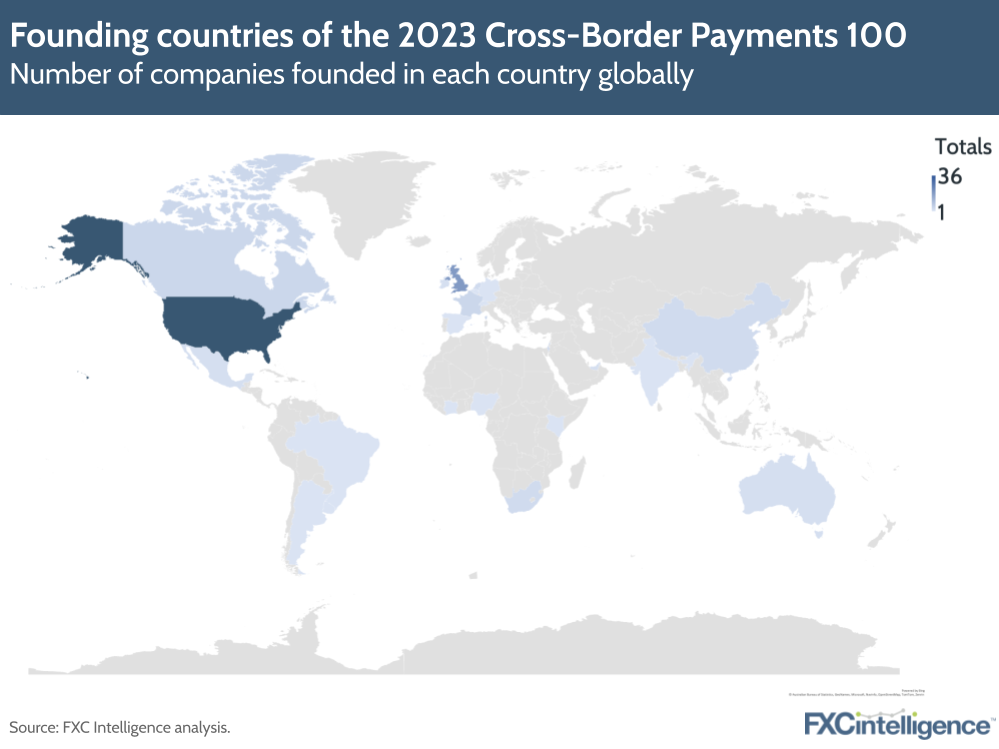
This graphic shows where companies on our Top 100 list were founded worldwide.
A significant number of cross-border payments companies on our list were founded in the US – which also had the highest number of banks (eight) and non-bank public companies (15) – and the UK, where 19 companies on our list were founded, including three VC-backed companies and six private equity-backed companies.
Outside of these frontrunners, payment companies were more widely spread out, with 13 companies on our list founded in Europe (excluding the UK), 12 in the APAC region, six in Africa and five in Latin America. These regions have all seen significant developments and partnerships in the space since our previous map, particularly when it comes to creating faster, less costly money transfers and linking instant payment schemes.
Note that while many of the companies were founded in one country, their focus has often expanded globally. For more insight on the regions and products that companies are focused on, see our full report.
Employee numbers highlight payment challenger growth
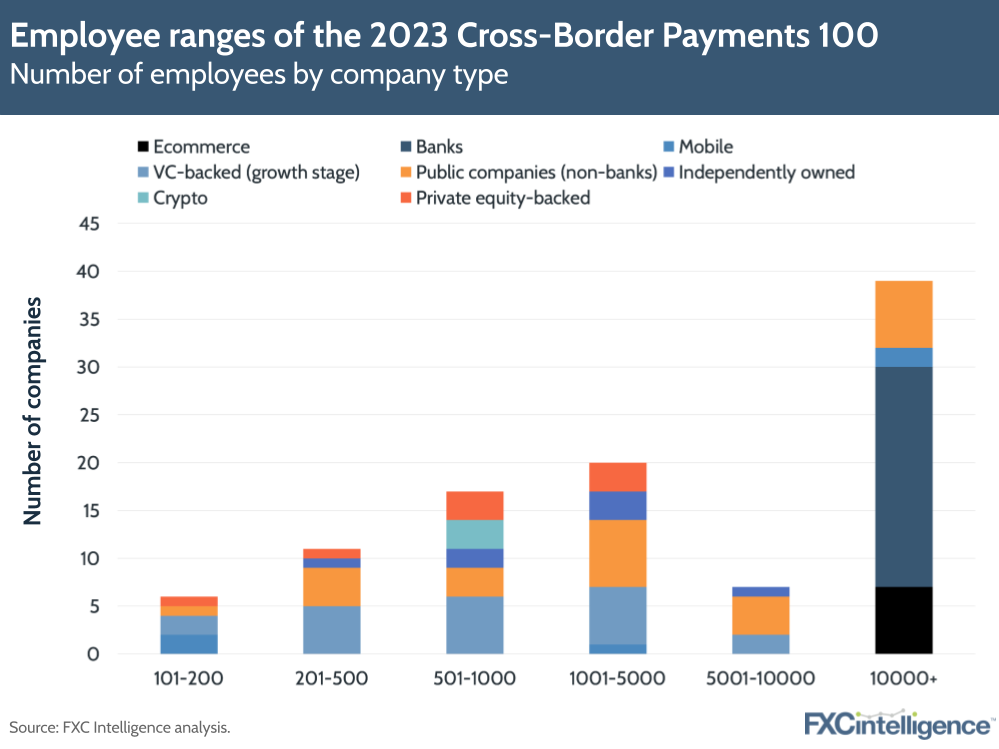
Companies on our Top 100 market map always need to have a certain scale. To break it down further, this graphic shows employee ranges across our top 100 picks (for more info on the number of customers each company serves, see our full report).
Banks and ecommerce players on our list have a global presence, reflected in their unsurprisingly high employee numbers on the right side of the graph. Interestingly, the three crypto companies we track – Circle, Ripple and Stellar – have grown more rapidly than players in other categories, with employee numbers between 501 and 1,000.
A much greater degree of variation is seen across other categories, but the fact that some VC-backed companies have grown to between 5,001 and 10,000 employees is testament to how fast new challengers in payments have risen through the years.
Next week, we’ll look more at how key figures have changed over the five years we’ve been putting out our Cross-Border Payments 100 map. In the meantime, for more insights into the industry, you can view more of our research and analysis here.


